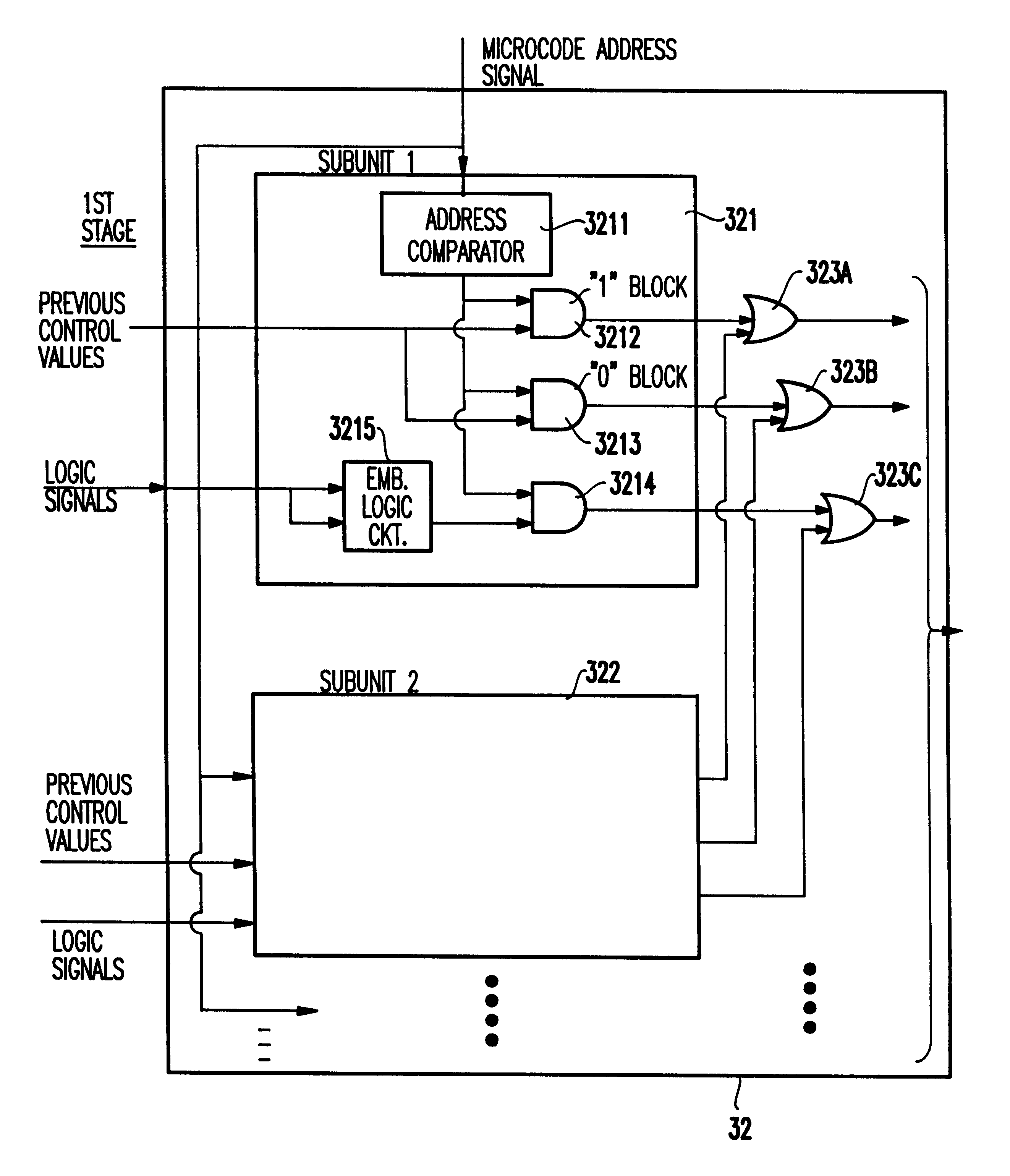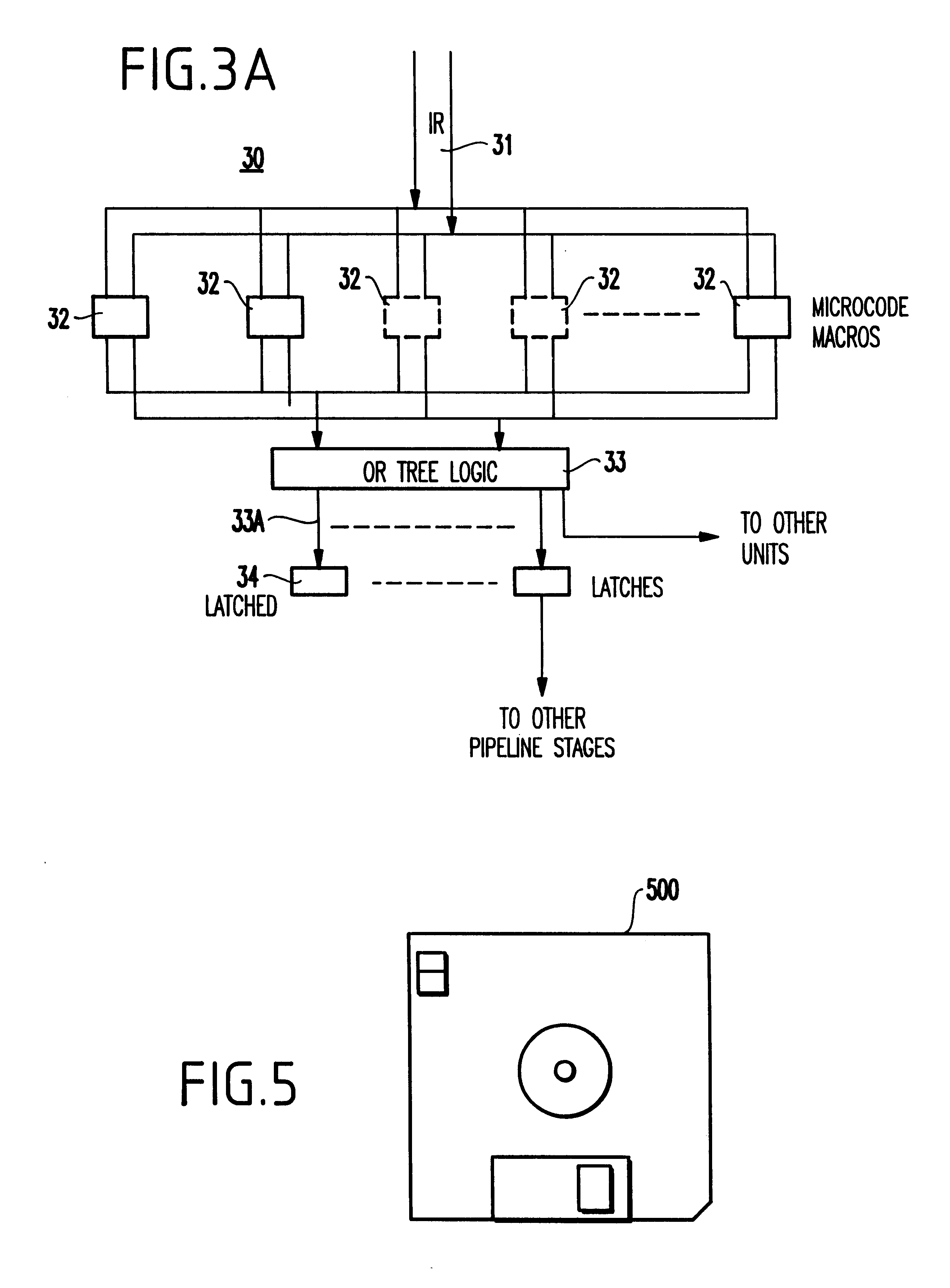Microprocessor including controller for reduced power consumption during decoding of instructions by microcode units
a microprocessor and instruction technology, applied in the field of microprocessors, can solve the problems of power consumption reduction, control signal not linked, and difficulty in reading/debugging any one opcode function,
- Summary
- Abstract
- Description
- Claims
- Application Information
AI Technical Summary
Problems solved by technology
Method used
Image
Examples
first embodiment
Specifically, as shown in FIGS. 3A-3D, the present invention provides a hybrid unit that combines the advantage of microcode, and the ability to execute control and engineering change as random logic. The present inventors have termed their inventive design technique as "pseudo microcode".
Generally, the present invention emulates a microcode ROM and generates a unique microcode address for each control signal. The opcode instruction (control signal) is sent to microcode units and each of the microcode units looks at (examines) the control signal. The microcode units change the instruction accordingly.
Thus, each of the microcode units look at the control signal and query whether its address is currently on the bus and whether the individual microcode unit is the line which the bus wants. If "yes", there is a match and then the control signal is defined and set to a "0", a "1" or kept to a previous value. By being able to keep the control signal to a previous value, less transitions c...
second embodiment
As described above with regard to the first embodiment, the method of reducing power relies on turning the microcode sequence into a giant state machine in which each opcode is a function of the immediately preceding opcode. Hence, every opcode will maintain the previous control signals to a previous state, and will change only the control signals required for the current cycle's operation.
However, the determination of this new state machine is based on an architecture specification with the designer looking at the function, and determining what control signals could be left at the previous state, and what control signals could be changed to new values.
Thus, a problem with the first embodiment is that such a determination and changing values of selected ones of the control signals are performed manually and require human inputs. Once the function is implemented, large test case fallout occurs. To fix the failures, the designer must perform a difficult and tedious debug operation inc...
PUM
 Login to View More
Login to View More Abstract
Description
Claims
Application Information
 Login to View More
Login to View More - R&D
- Intellectual Property
- Life Sciences
- Materials
- Tech Scout
- Unparalleled Data Quality
- Higher Quality Content
- 60% Fewer Hallucinations
Browse by: Latest US Patents, China's latest patents, Technical Efficacy Thesaurus, Application Domain, Technology Topic, Popular Technical Reports.
© 2025 PatSnap. All rights reserved.Legal|Privacy policy|Modern Slavery Act Transparency Statement|Sitemap|About US| Contact US: help@patsnap.com



